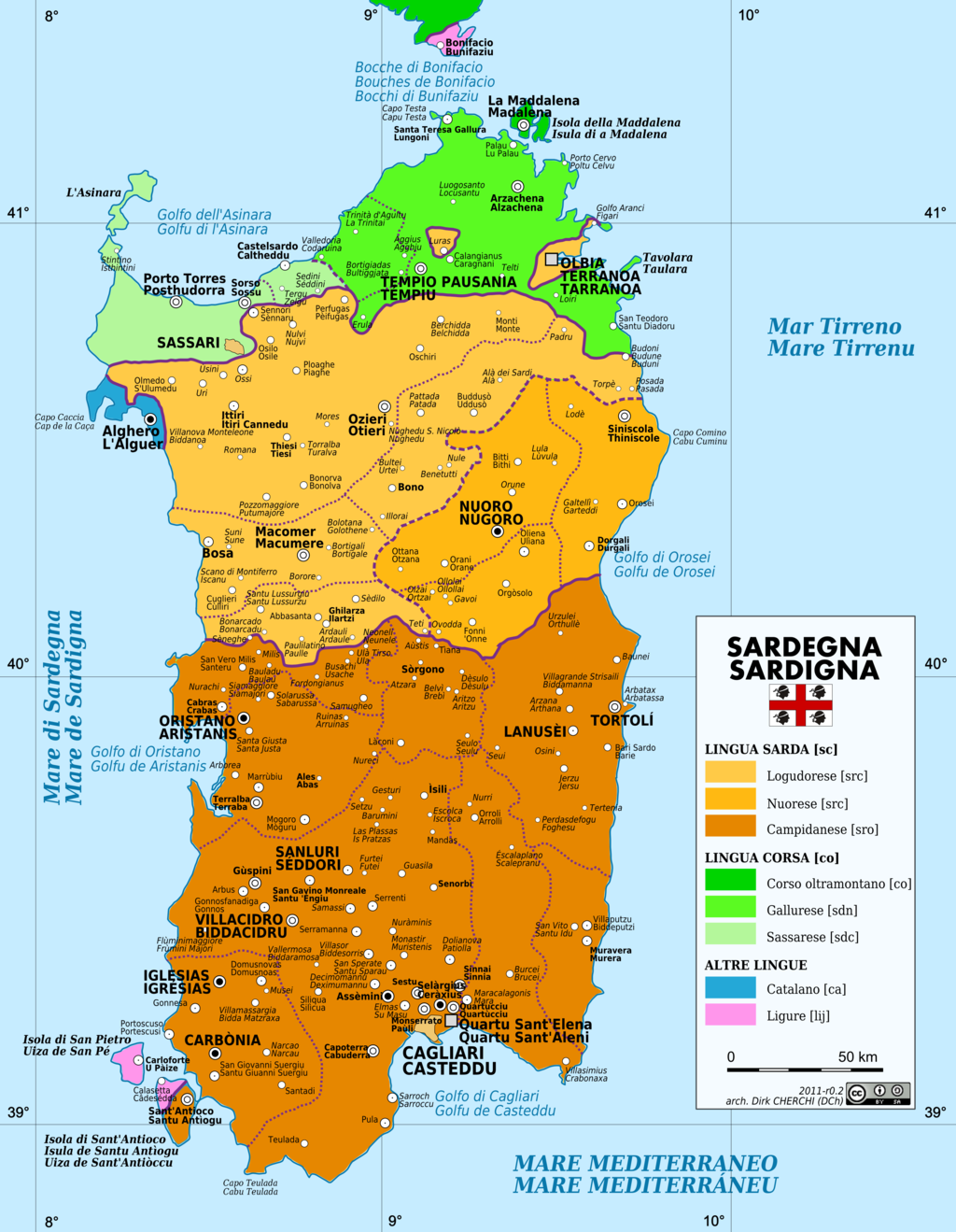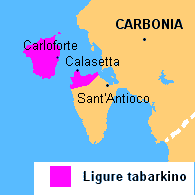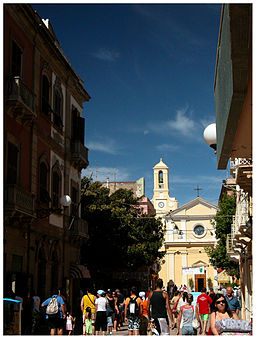Language  |
Beauty & a key
to knowledge |
Languages of Sardinia  |
Map showing the linguistic complexity of Sardinia
(Originator: User:Dch on Wikimedia Commons) |
The island of Sardinia has long fascinated Romance linguists. Not surprisingly, it has its own language, but it also comes up with the unexpected. This article is about one such thing.
This map shows the languages spoken territorially, that is to say, languages which are used by the majority of people living in particular areas. Being the official language, Italian is used and understood in all areas.
The accuracy of the map has been questioned, particularly in respect of the present-day extent of Catalan, but also in relation to the boundary between two varieties of Sardinian.
Introduction
The island of Sardinia has its own language, derived from Latin, but other languages are spoken territorially in certain areas. In the north we find Sassarese and Gallurese, which are closer to Corsican than Sardinian is, and the town of Alghero speaks Catalan, brought by settlers from eastern Spain during the period of Aragonese rule. However, what I find most intriguing is the little pocket of Ligurian spoken on two islands off the south-west coast.
Ligurian
Ligurian is a variety of Gallo-Italian, very different from standard Italian. It was the principal language of the Republic of Genoa and, since Corsica belonged to Genoa for several centuries, it is not surprising that there are pockets of Ligurian on that island, at Calvi in the north and Bonifacio in the south. However, it seems strange that this language should have established itself in Sardinia, which never belonged to Genoa, but it arrived by a circuitous route as a result of a chain of chance events.
Tabarka
 |
The fort on Tabarka island
(Photo by Habib M’henni / Wikimedia Commons) |
Tabarka is a coastal town in north-western Tunisia. Just off the coast is an island which is also called Tabarka. From 1540 to 1742, the Genoese maintained a garrison on the island, which had been given by the Ottoman Bey of Tunis as a concession to the Genoese family of Lomellini. They brought in settlers from the town of Pegli, near Genoa, who engaged in coral fishing.[1] For two centuries they continued to use their Ligurian dialect and came to be known as Tabarchini. However, by the late 1730s the coral was exhausted and, meanwhile, relations with the local people were deteriorating. Many Tabarchini moved back to Europe, some settling on the island of New Tabarca, south of Alicante in eastern Spain, others on islands off the coast of Sardinia.
- I am not entirely sure what is meant by "coral fishing". It ought to mean fishing on coral reefs, but given
the fact that the coral became exhausted, it seems to me that what is meant is coral mining.
The Tabarchini in Sardinia
The Kingdom of Sardinia had come into the hands of the House of Savoy, which ruled its duchy from the city of Turin. The Dukes of Savoy were now Kings of Sardinia and they grew in power. In the 19th century the Kingdom of Sardinia participated in the Crimean War and later evolved into the Kingdom of Italy.
 |
Ligurian in south-west Sardinia
(See also this file, which is taken
from the map at the top of the
page and shows more detail) |
In the 1730s Charles Emmanuel III was keen to populate areas of his kingdom which were unoccupied, and so he was pleased to allow Tabarchini to colonize two islands off the south-west coast of Sardinia. Some settled on the island of Sant'Antioco, where they founded the town of Calasetta. Others went to the island of San Pietro and here they founded the town of Carloforte, naming it in honour of the King. The Ligurian language was replaced in New Tabarca by Valencian and Castilian, but it has survived on the Sardinian islands. The other settlement on Sant'Antioco speaks Sardinian, but Ligurian is the only territorial language of San Pietro.
Carloforte
Now at long last we come to the town of Carloforte, or U Pàize, as the locals call it. That just means "the village" or "the town". The Tabarchini who settled on San Pietro started building the town in 1739.  |
Via Solferino in Carloforte
(Photo: Baldo Simone) |
The island was unoccupied when they arrived. However, there was some evidence of human activity in the form of a church, reputedly built in the 14th century to commemorate some hundreds of participants in the Children's Crusade of 1212 who perished in a shipwreck just off the island. The factual accuracy of the story is in doubt, but the church remains, within the bounds of the town, and is known as the Chiesa dei Novelli Innocenti. Apparently, it is used just once a year.
Naturally, the people made a living by fishing and this is still one of their sources of income, but in the present age tourism has become important, as has income remitted by the many merchant seamen who originate from the town. There was a communally owned tuna-processing plant to the north of the town, but parts of this are now derelict, although a privately owned tuna-processing business uses some of the site.  |
Scene in Carloforte
(Photo: Yoruno) |
Now that tourism is significant, another part of the site is being used as a wind-surfing school. Ferry services connect the port of Carloforte with the Sardinian mainland at Portovesme (Portoscuso) and also with Calasetta on Sant'Antioco.
Closing thoughts
The Ligurian language was transported to North Africa almost five centuries ago and survived there in an island community for two centuries, before being transported to other islands back in Europe. No doubt relative isolation and self-sufficiency account for its survival into the modern age, but one wonders whether these outposts will survive for another century, given the advent of electronic communication and mass tourism.
- Posted April 2017